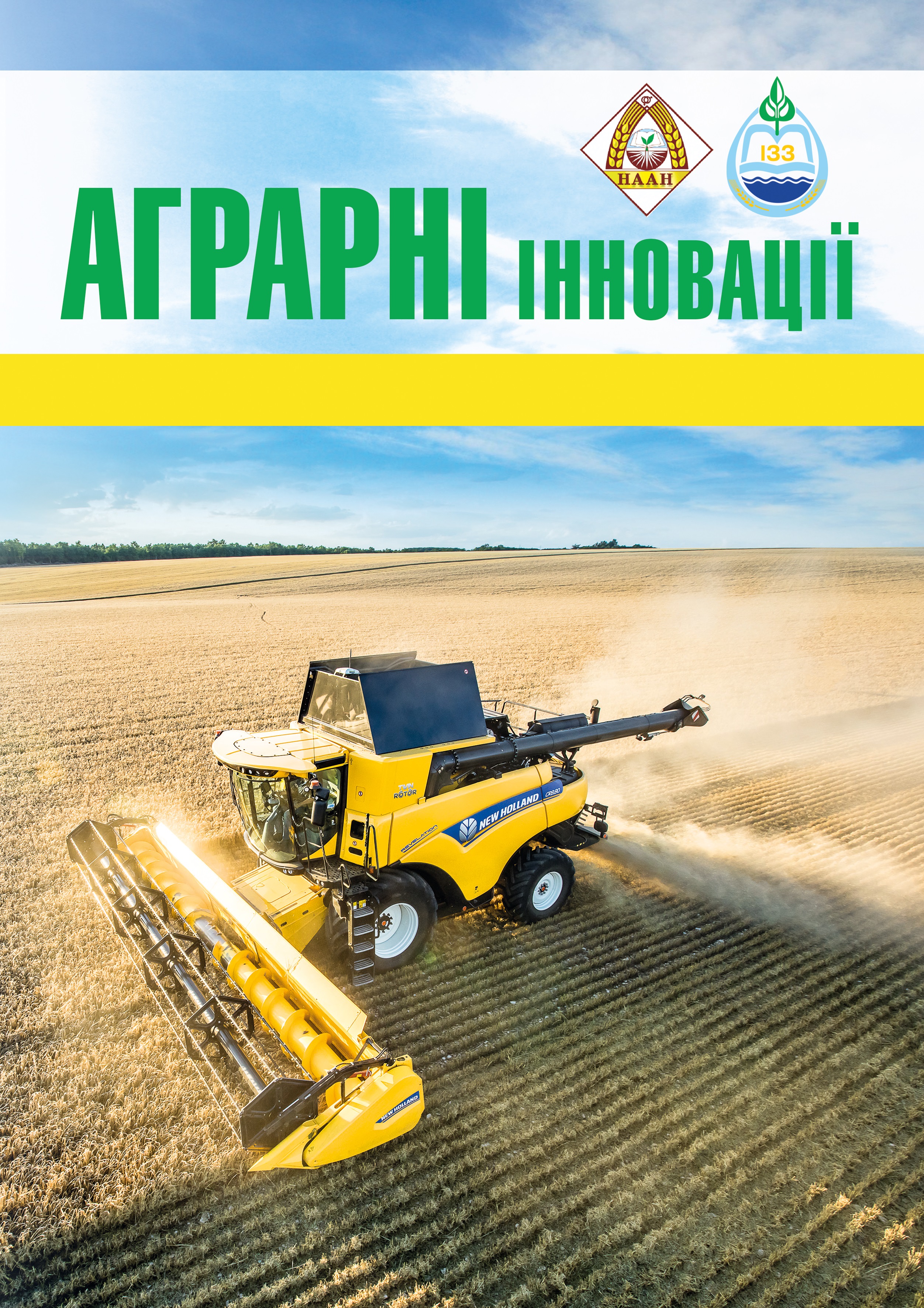Productivity of modern winter wheat varieties under the conditions of Ukrainian Northern Steppe subzone
Abstract
The presence of a high degree of climatically contrastingareas necessitates a constant need to assessthe diversity of winter wheat varieties material at a particularsubzone. Purpose. To show peculiarities in formationof yield and grain quality for modern winter wheat varietiesat compare with the standard, possibilities and restrictionsof their use for improvement and (or) in direct utilizationof varieties under the conditions of Ukrainian NorthSteppe. Methods: The experiments were conducted inthe research field of the Educational and Scientific Centerof the Dnieper State Agrarian and Economic University.Phenological observations of organogenesis, yield evaluation,estimation of the main parameters of the structure(plant height, number of grains from the main spike,weight of grain from the main spike, weight of grain fromthe plant, weight of thousand grains) were conducted.Grain quality was assessed by the content of protein,glutenins and gliadins. Results. The highest productivitycoefficient was shown by the varieties Favoritka,Lugastar, Komerciyna. Three varieties Komerciyna,Spivanka, Favoritka showed significantly higher yields(at compare with the standard Podolyanka). The varietyFavoritka has formed a high yield due to the combinationof high weight of grain from the main spike, fromthe plant and high weight of thousand grains. VarietiesSpivanka and Komerciyna due to the high weight of grain from the main spike and the high weight of thousandgrains. It was found that the factors of variety and yearstably influenced on the formation of yield, but the prioritywas on changes in climatic conditions. There aredifferent ways of forming this trait in the North Steppeof Ukraine, depending on the genetically variety determination.Varieties Komerciyna, Lugastar, Voloshkovaformed a completely satisfactory by grain quality, varietyFavoritka showed significant advantages in protein contentand composition of glutenins and gliadins. Findings.For direct use in the region according to a set of indicatorsof quality and yield should be used varieties Favoriteand Komerciyna. As donors of productive qualities varietiesFavoritka, Komerciyna, Spivanka, as donors of qualitativeparameters Komerciyna, Lugastar, Favoritka,Voloshkova can be used.
References
2. Bordes J., Ravel C., Le Gouis J., Lapierre A., Charmet G., Balfourier F. Use of a global wheat core collection for association analysis of flour and dough quality traits. Journal of Cereal Science. 2011. No. 54. P. 137–134. DOI: https://doi.org/10.1016/j.jcs.2011.03.004.
3. Daryanto S., Wang P., Jacinthe P. Global synthesis of drought effects on cereal, legume, tuber and root crops production: A review. Agricultural Water Management. 2017. No. 179. P. 18–33. DOI: 10.1016/j.agwat.2016.04.022.
4. Destelfeld A., Avni R., Fischer A. Senescence, nutrient remobilization, and yield in wheat and barley. Journal of Experimental Botany. 2014. No. 65. P. 3783–3798. DOI: 10.1093/jxb/ert477.
5. Essam F., Badrya M., Aya M. Modeling and forecasting of wheat production in Egypt. Advances and Applications in Statistics. 2019. No. 59 (1). P. 89–101. DOI: http://dx.doi.org/10.17654/AS059010089.
6. FAO. FAOSTAT: FAO Statistical Databases. Food and Agriculture Organization. Rome, Italy. 2016. URL: http://www.fao.org/faostat/en/#home.
7. Jaradat A. Simulated climate change deferentially impacts phenotypic plasticity and stoichiometric homeostasis in major food crops. Emirates Journal of Food and Agriculture. 2018. No. 30 (6). P. 429–442. DOI: 10.9755/ejfa.2018.v30.i6.1705.
8. Harkness C., Semenov M.A., Areal F. Adverse weather conditions for UK wheat production under climate change. Agricultural and Forest Meteorology. 2020. No. 1078622. P. 282–283. DOI: 10.1016/j.agrformet.2019.107862.
9. Le Gouis J., Oury F.-X., Charmet G. How changes in climate and agricultural practices influenced wheat production in Western Europe. Journal of Cereal Science. 2020. No. 93. DOI: 10.1016/j.jcs.2020.102960.
10. Nazarenko M., Mykolenko S., Okhmat P. Variation in grain productivity and quality of modern winter wheat varieties in northern Ukrainian Steppe. Ukrainian Journal of Ecology. 2020. No. 10 (4). P. 102–108. DOI: 10.15421/2020_175.
11. USDA. World Agricultural Production. 2020. URL: https://apps.fas.usda.gov/psdonline/circulars/production.pdf.






